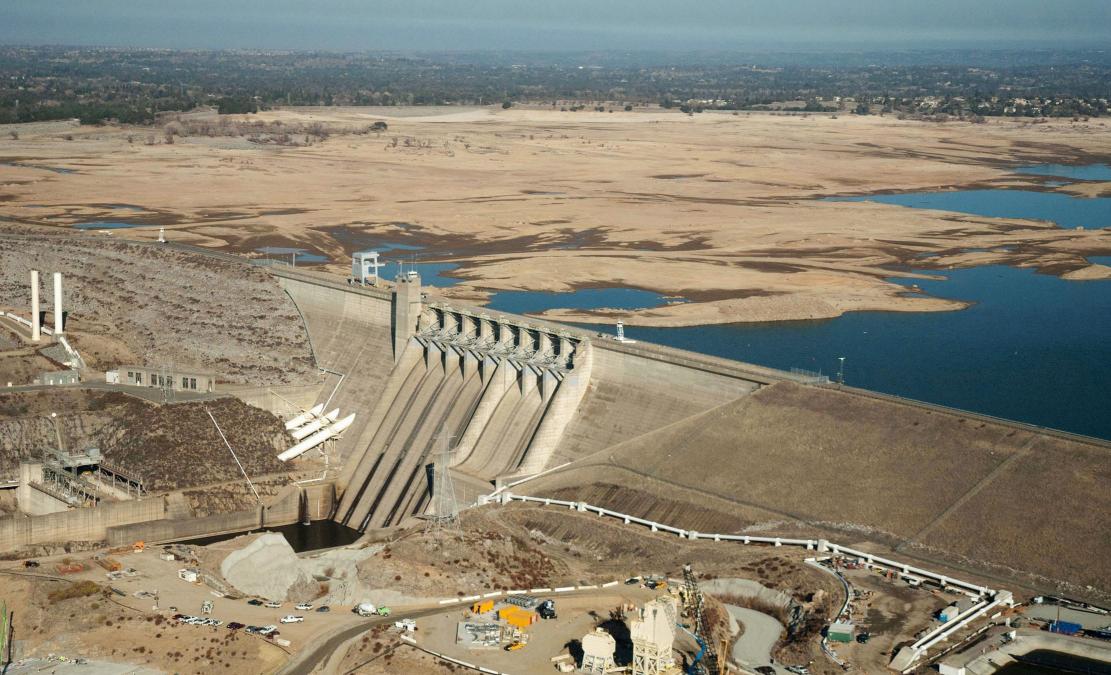Ongoing drought conditions across Iran may transform vast swathes of the country into desert, a new report has said.
As reported by IRNA last year, Iran had to import 50% of its required agricultural products from countries as far away as South America. Continuing urban pollution and drought have already wreaked havoc in places like Zayandeh Rud River, and the Gaav-Khooni basin in Isfahan, said Ahmad Khatoonabadi, from Isfahan University in a seminar on “Saving the Zayandeh Rud River”. The situation is not expected to change in the foreseeable future, he said.
“Critical threshold for drinking water requirement per capita in the world is 1,200 million cubic meters, while the figure for Isfahan is less than half the global rate. This crisis cannot be fully resolved but can only be brought under control”, Khatoonabadi added.
The crisis will result in unemployment and ecological and health issues in the near future. When Gaav-Khooni basin completely dries up, toxic salt particles that have been left behind will travel to adjacent regions as far as Tehran. Fortunately, the swamp’s surrounding bush, yet to be fully dried up, has prevented further damage to the area’s ecosystem, Khatoonabadi warned.
Water Management by Modern Irrigation
In Iran, out of around 10 million hectares of cultivable land, 1.3 million hectares is equipped with pressurized irrigation systems. Close to 55% of this area uses drip irrigation which improves water productivity by 95%, while 45% of this figure belongs to rain-fed farming which also enhances productivity by 70%.
“In recent years, the government has tried to encourage the application of modern irrigation systems by allocating facilities aiming at the implementation of pressurized irrigation systems in farmlands. However, farmers will not choose to replace their old ways unless constant monitoring is conducted, Donay-e Eghtesad quoted Hamid Janbaz, an advisor to the agriculture minister as saying.
By applying new technologies, namely drip irrigation, to those plants like wheat that grow in rows, water productivity is achievable. For instance, on global levels, equipping 100 hectares of wheat farms with this system triples productivity by yielding 10-11 tons of crops, while the figure stands at 3.5 tons in Iran. The global level of productivity can easily be achieved if water supply to agriculture sector is constantly monitored and measured. Presently, efficient patterns are being applied to distribution of water among households and in the industrial sector. This should have been started long before during the Second Five-Year Economic Development Plan by ministries of energy and agriculture, but has so far been neglected, Janbaz said.
Average global precipitation is 850 mm and some countries go well beyond it. Recent periods of drought in Iran have pushed the average down from 250 mm to 228 mm. At present, more than 92% of crops are produced in irrigated farms and less than 8% on rain-fed land. In countries with considerable rainfall, 60% of crops are produced by rain-fed agriculture.
The agriculture sector in Iran holds more than 15-16% of added value and 24 to 25% employment potential within itself. In the past 40 years, the average investment in agriculture has been far below the minimum requirement of 15%, and has reached just above 3.5%, according to Janbaz.
Water Alert for Tehran
Government officials have warned about the current water crisis in Iran’s capital city Tehran, where the cabinet has already cut off water supply to residents with excessive consumption.
The national water and wastewater engineering company said a quarter of the country’s water is consumed in Tehran Province alone.
Careless consumption in Tehran and many other big cities, low rainfall and prolonged drought, combined with a 1.5-Celsius increase in average temperature is exacerbating the situation, said Hamidreza Janbaaz, the Head of Water Company.
Since October last year, rainfall has decreased by 8% compared to the similar period in the previous year.
Currently, as many as 517 cities across the country have the same amount of water supply and consumption and this is an alarming situation.
Officials warned 12 major cities are in danger zone and Tehran is currently on yellow alert, adding that if there are no high rainfalls in the fall, the situation would move to red alert in Tehran.
Iranians use an average of 66 gallons of water every day, which is said to be twice the world standard. Some critics say the overconsumption of water (as well as electricity and gas) in Iran is due to heavy subsidies paid by the government which is said to cover over 65 percent of water costs.
The country is headed for an unprecedented water shortage and little has been done to reverse the decades-long trend that has reduced the country’s water supply to crisis levels.
The crisis is so severe that the Leader recently allowed withdrawal of $10b from National Development Fund of Iran (NDFI) for financing water and soil projects addressing ongoing water crisis in Iran.


